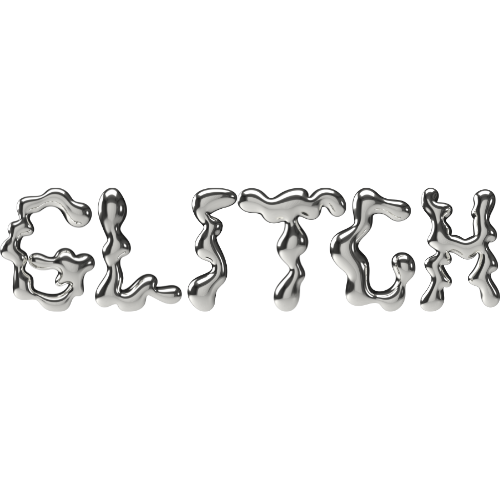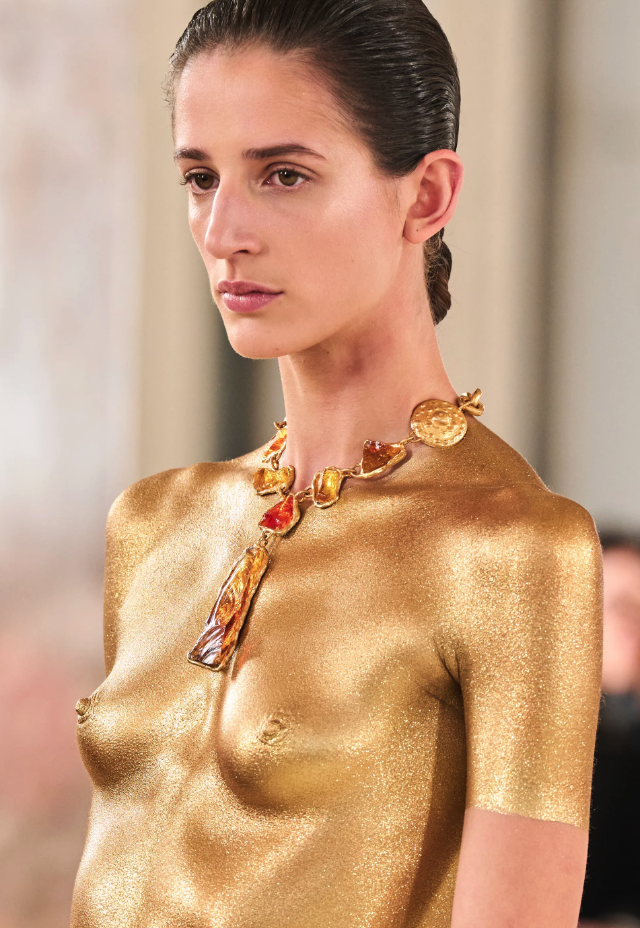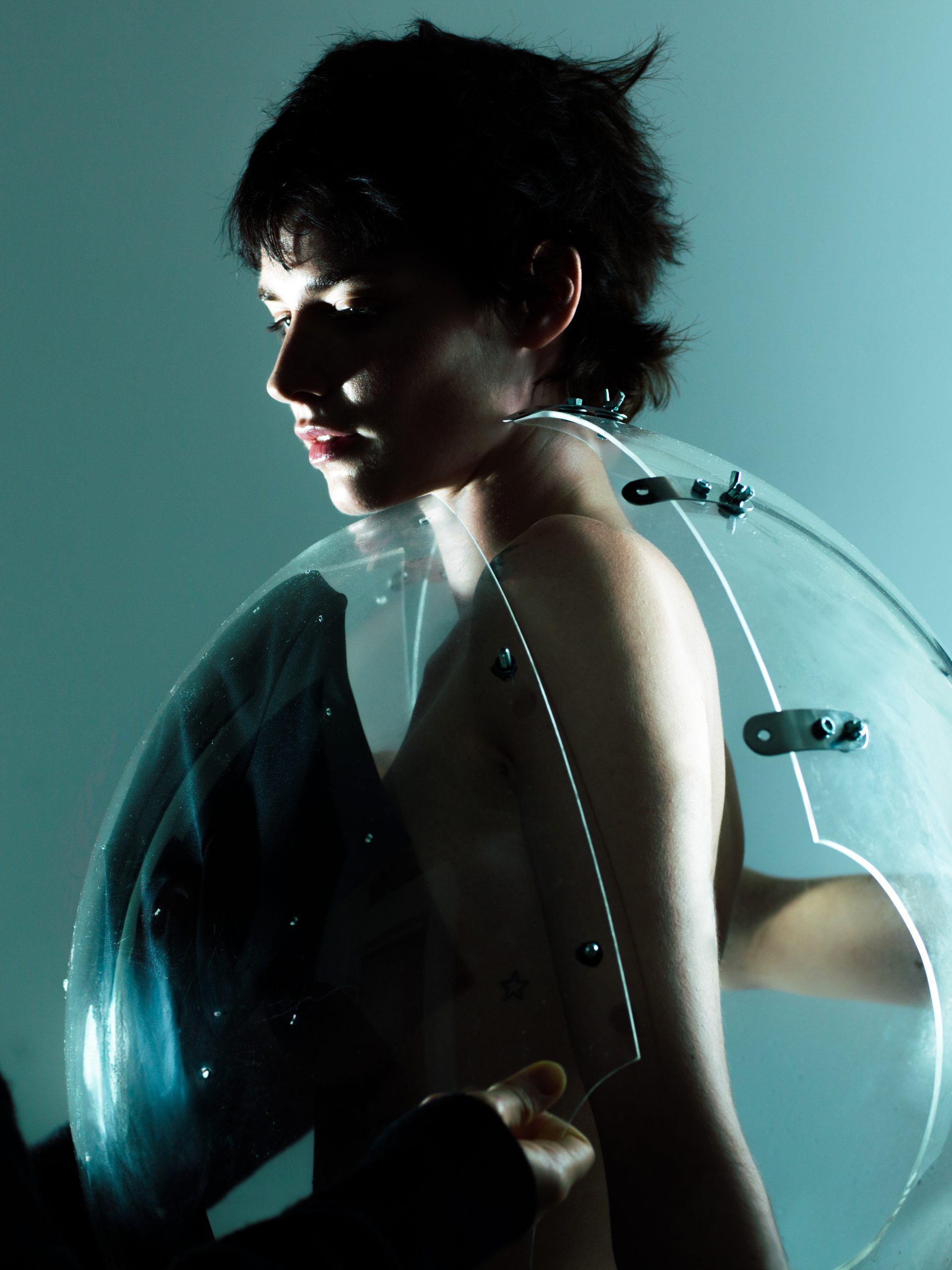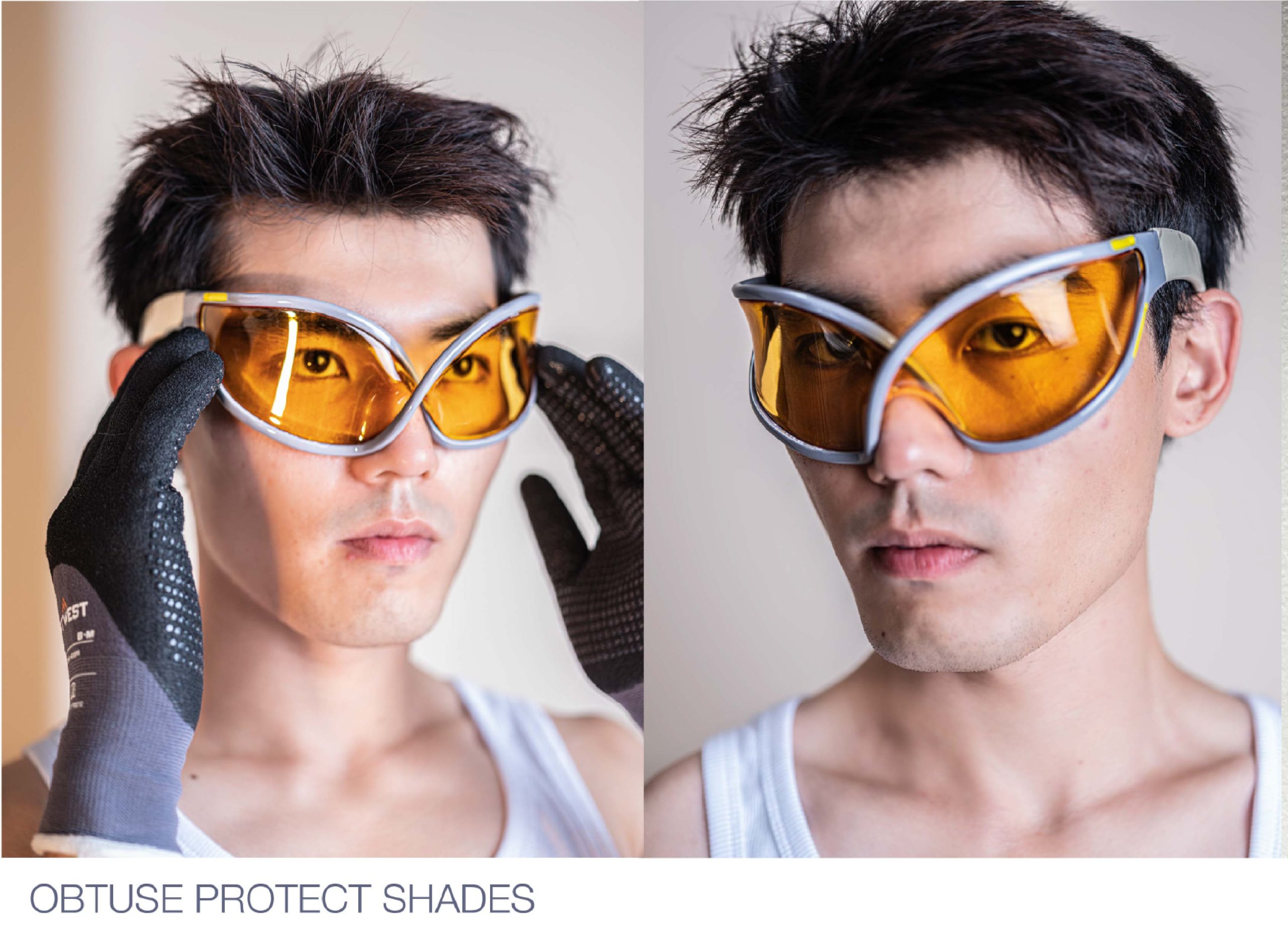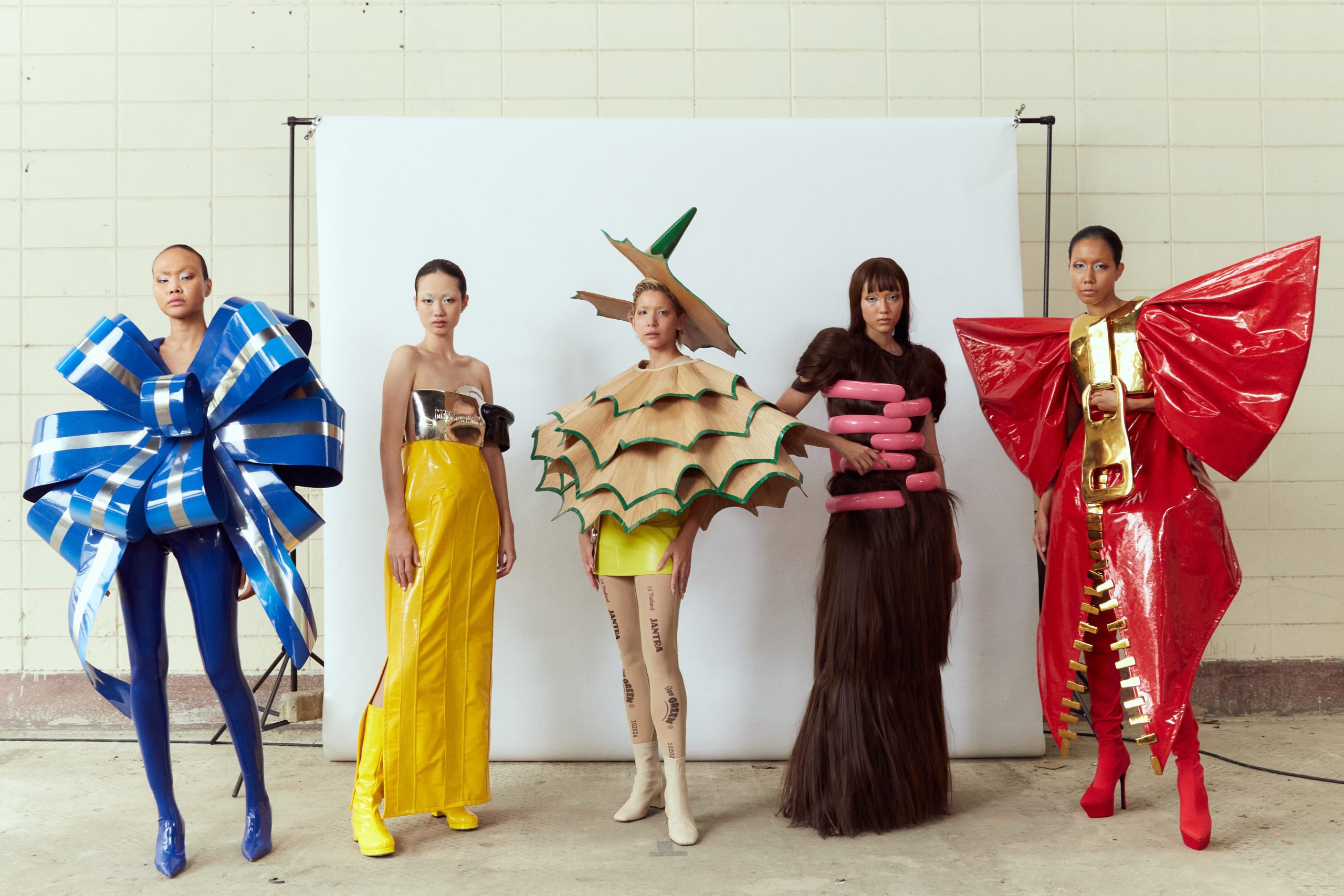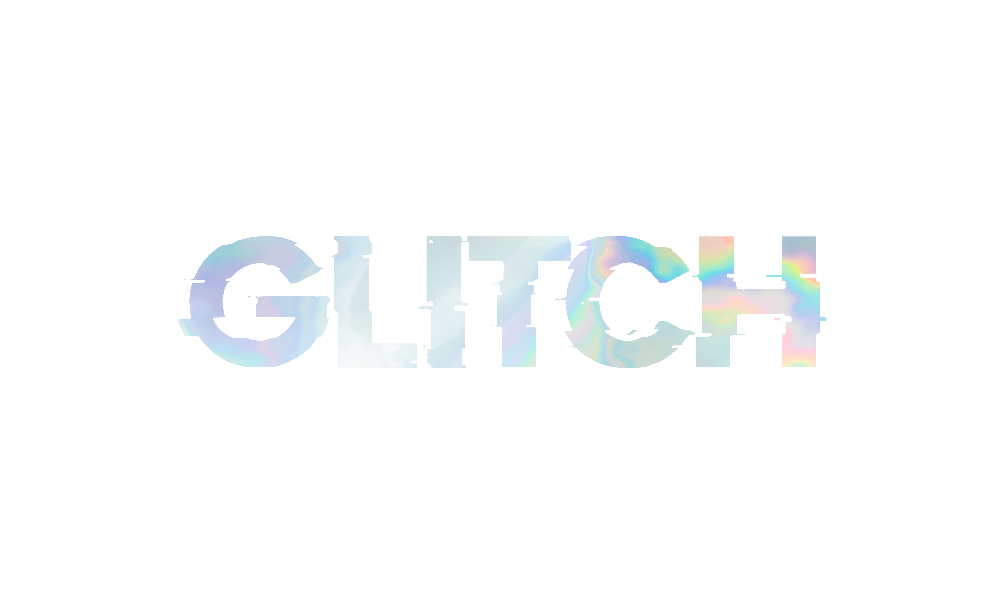Extremity hounded the runway for Schiaparelli’s Haute Couture show on the 23rd January. A selection of blunt and arresting shapes and lines slotted together to present Roseberry’s nuanced and dramatic inferno narrative. Sharp hourglass silhouettes with suffocating cinched waists monopolized the opening section. Fiercely suited women adorned with clunky metal and leathered gloves stomped the juxtaposing white highway to hell. Roseberry’s looks all stemmed from a fixation on form, and an interest in both heightening and morphing bodily shape. Corseted and tailored looks became so exaggerated that they tapered and streamlined the dainty models who had been cast to wear them, almost armouring these women as they delved deeper into the runway.
The show exuded a certain earthiness akin to nature, as spectators journeyed further towards the molten core of the show, and the landscape of the inferno began to piece together in front of them. Metallic and mineral shades ranging from pearlescent browns, to quartz greens and brazen terracotta felt mystic, and gave a very natural brightness and baseness. These stone and crystal pigments inspired by nature are more subtle and hued than the previous synthetic bold beats we have seen trending in 2022, and perhaps this is indicative of how muted colour palettes are reviving.
Roseberry’s Instagram commentary summarised the direction as “celebrating the glory of nature and guarding the woman who wears it”, and thus this performance of harshly clad women journeying through the ruggedness of the inferno may be alluding to the idea of fashion as a form of protective masking. Fashion can express an authenticity, but it can also be a veil to hide behind, and the entirety of the show pivoted on this idea that “nothing is as it appears to be”. Perhaps, a jibe at the mistruths and destruction the industry has become known for, the overriding association of fashion with the underworld cannot be dismissed as meaningless. Lacing, sheer, and beads also flowed through the catwalk, imposing a certain half-in half-out nakedness that accented this theme of duplicity. The idea of being stripped bare, in nature and nakedness, combined with the contradictory threatening silhouettes of other looks, developed the general sentiment of things being amiss and awry.
The crux of the show however had to be the beasts that danced towards the centre of Dante’s 9 circles of hell. Irina Shayk, Shalom Harlew and Naomi Campbell crawled past the front row as the lion, the leopard, and the she-wolf. The bulging fur covered animal heads felt obnoxiously wrong, being too realistic and reminiscent of taxidermy and poaching. Despite being ethically made, and exuding incredible craftsmanship, the aesthetics initially seemed too vulgar and discordant with 2023 ethics and attitudes.
Uncomfortable and the “ugly”. The show dramatized the decline of an industry which in many ways has already become satanic, and could incinerate itself from the inside out. Yet, despite initial recoils to the coats and dresses fit with faux animal skins, the shock factor of these Schiaparelli pieces has meant that this imagery is dominating our screens and socials. There is something intelligent in Roseberry’s exemplification of how things that are initially deemed distasteful can become agreeable when marched down a runway on supermodels, or flooded into the press machine of fashion. Personal taste, morality, rightness and wrongness, can all too easily be morphed by the cogs of the machine. Beauteous or diabolical, the pillars upholding the traditional fashion industry are certainly fiends to be wrestled with as we welcome a new year.
by Hebe Street from GLITCH Magazine
